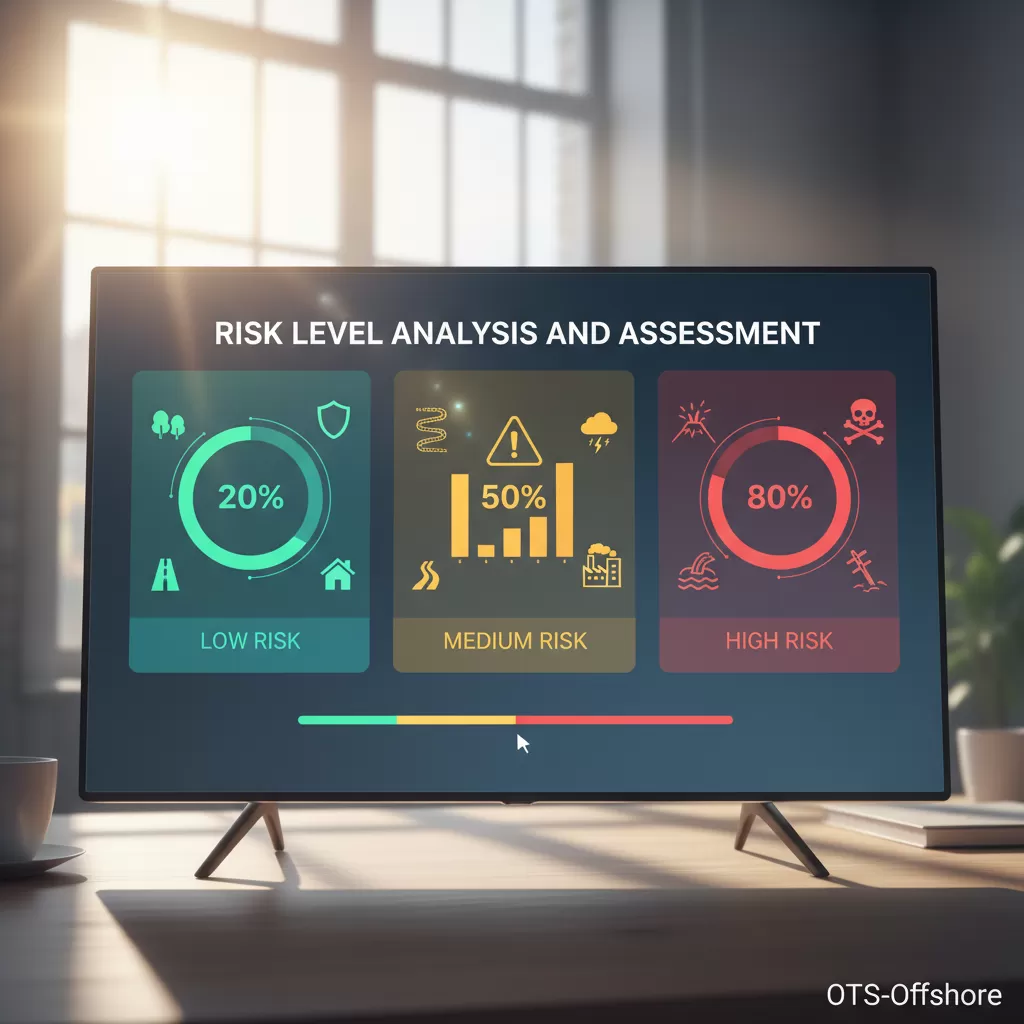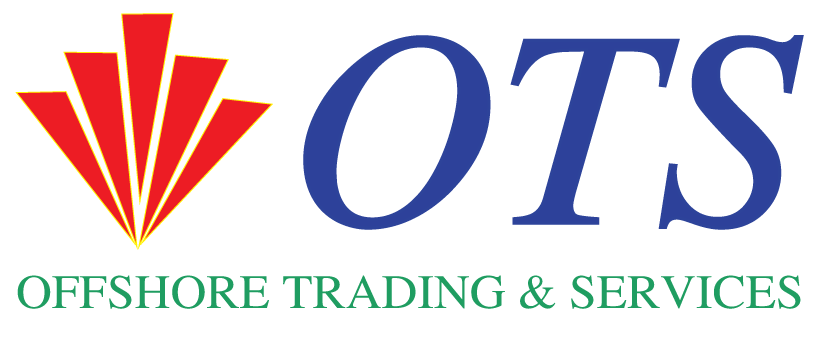Risk Level Analysis is paramount for navigating the complexities of the oil and gas sector, ensuring operational integrity and financial stability. This comprehensive guide delves into a three-tiered grading system – Low, Medium, and High – for evaluating and managing potential hazards across upstream, midstream, and downstream operations. Understanding these risk levels allows for targeted mitigation strategies and informed decision-making.
Understanding Risk Level Analysis and Assessment: A Three-Tiered Framework for Oil and Gas Operations
The oil and gas industry operates within a dynamic and inherently hazardous environment. Effective Risk Level Analysis and Assessment are not merely regulatory necessities but fundamental pillars supporting operational safety, environmental stewardship, and economic viability. This article outlines a systematic approach to categorizing and evaluating risks into three distinct grades: Low, Medium, and High. This framework enables stakeholders to prioritize resources, implement appropriate control measures, and foster a robust safety culture. The core objective of conducting a thorough Risk Level Analysis is to identify potential threats, understand their likelihood and impact, and subsequently develop strategies to manage them effectively. Without a clear understanding of risk levels, organizations are susceptible to unforeseen incidents, leading to significant financial losses, reputational damage, and, most importantly, harm to personnel and the environment.
The Critical Importance of Risk Level Analysis in the Energy Sector
The intrinsic nature of oil and gas exploration, production, transportation, and refining exposes organizations to a myriad of potential dangers. These range from geological uncertainties and equipment failures to geopolitical instability and environmental spills. A well-defined Risk Level Analysis framework provides the necessary structure to systematically identify, analyze, and evaluate these potential threats. It serves as a proactive tool, moving beyond reactive incident management to a more strategic, preventive approach. By quantifying and qualifying risks, companies can make informed decisions regarding capital allocation, operational procedures, and emergency preparedness. This proactive stance is crucial for maintaining the license to operate, meeting stringent regulatory requirements, and securing stakeholder confidence. The process of risk assessment, a core component of Risk Level Analysis, is iterative and requires continuous refinement as operational conditions change and new information becomes available.
What Constitutes a Comprehensive Risk Assessment Process?
A comprehensive risk assessment process is a multi-stage undertaking designed to provide a holistic view of potential hazards. It begins with hazard identification, where all conceivable risks associated with a specific operation, project, or asset are cataloged. This stage often involves input from diverse teams, including engineers, geologists, safety officers, and operational personnel. Following identification, the analysis phase quantifies the likelihood of each hazard occurring and the potential severity of its impact. This often involves using historical data, expert judgment, and probabilistic modeling techniques. The evaluation phase then compares the analyzed risks against predefined criteria to determine their acceptability and categorize them into the respective risk levels – Low, Medium, or High. Finally, the treatment phase focuses on developing and implementing strategies to mitigate, transfer, avoid, or accept these identified risks. Each step is interconnected, and a deficiency in one can undermine the entire Risk Level Analysis.

Defining the Three Risk Grades: Low, Medium, and High
The categorization of risks into distinct grades – Low, Medium, and High – is central to effective risk management. This tiered approach allows for differential treatment and resource allocation based on the severity and likelihood of potential incidents. Each grade represents a different level of concern and demands specific management strategies. The consistent application of these definitions across all operations is crucial for ensuring uniformity and clarity in risk communication. Understanding these definitions is the first step in implementing a robust Risk Level Analysis program.
Low Risk Grade: Minor Incidents with Limited Impact
Risks categorized as ‘Low’ typically involve events that are unlikely to occur and, if they do, would have minimal consequences. These might include minor equipment malfunctions that do not affect overall production, small operational inefficiencies that have negligible financial impact, or administrative errors with easily rectifiable outcomes. For low risks, the focus is generally on maintaining existing controls, routine monitoring, and ensuring that established procedures are followed. While these risks do not warrant extensive mitigation efforts, they should not be entirely ignored. Regular audits and a culture of continuous improvement help ensure that these minor issues do not escalate into more significant problems. The cost of mitigating low risks often outweighs the potential benefits, making a ‘manage by exception’ approach suitable.
Medium Risk Grade: Moderate Incidents Requiring Focused Mitigation
Medium risks represent a significant concern requiring careful management and proactive mitigation strategies. These are events that have a moderate likelihood of occurrence and could lead to moderate impacts, such as temporary production downtime, minor environmental releases that are quickly contained, or moderate financial losses. For these risks, a detailed action plan is essential. This involves implementing enhanced control measures, increasing the frequency of monitoring, and developing specific contingency plans. Risk Level Analysis at this tier focuses on reducing both the probability and the potential severity of an incident. Investment in specific training, equipment upgrades, or procedural enhancements may be justified to address medium risks effectively. Regular review of these risks is crucial to ensure that mitigation efforts remain effective.
High Risk Grade: Severe Incidents with Potentially Catastrophic Consequences
High risks are characterized by a high likelihood of occurrence or the potential for catastrophic consequences, even if the likelihood is perceived as low. These events could result in major environmental disasters, significant loss of life, extensive operational shutdowns, and severe financial and reputational damage. The focus for high risks is on rigorous control and mitigation. This often involves implementing multiple layers of protection, robust emergency response plans, comprehensive training, and significant capital investment in safety systems and technologies. A detailed Risk Level Analysis for high-risk scenarios necessitates a thorough understanding of failure modes and their cascading effects. The goal is to reduce the probability of occurrence to an acceptable level or, if that is not feasible, to ensure that the impact can be effectively managed. For these risks, a ‘zero tolerance’ approach to failure is often adopted, with a strong emphasis on preventing occurrence.
Methodologies for Risk Level Analysis and Assessment
Various methodologies and tools are employed to conduct effective Risk Level Analysis and assessment in the oil and gas sector. The choice of methodology often depends on the complexity of the operation, the stage of the project, and the regulatory environment. These methods provide a structured approach to identifying, analyzing, and evaluating risks, ensuring that all critical aspects are considered. Understanding these methodologies is key to applying the risk grading framework accurately.
Qualitative Risk Assessment Techniques
Qualitative risk assessment relies on descriptive scales and expert judgment to assess risks. Techniques such as HAZID (Hazard Identification), HAZOP (Hazard and Operability Study), and FMEA (Failure Mode and Effects Analysis) fall under this category. HAZID is used to identify potential hazards early in the design phase, while HAZOP systematically examines process deviations that could lead to hazardous situations. FMEA focuses on identifying potential failure modes of equipment and their effects. These methods are effective for identifying a broad range of risks and are often the first step in a Risk Level Analysis. They provide a structured way to brainstorm potential issues and their likely outcomes, categorizing them based on predefined risk matrices.
Quantitative Risk Assessment (QRA) Approaches
Quantitative Risk Assessment (QRA) assigns numerical values to the likelihood and impact of risks, allowing for a more precise and objective evaluation. Techniques like Fault Tree Analysis (FTA) and Event Tree Analysis (ETA) are commonly used. FTA works backward from an undesirable event to identify all possible combinations of failures that could lead to it, calculating the probability of that event occurring. ETA, conversely, works forward from an initiating event to analyze the potential outcomes based on the success or failure of safety systems. QRA is particularly valuable for high-risk scenarios where a detailed understanding of probability and consequence is critical for decision-making, often informing the Risk Level Analysis.
Semi-Quantitative Methods and Risk Matrices
Semi-quantitative methods combine elements of both qualitative and quantitative approaches. They often use descriptive scales (e.g., low, medium, high) for likelihood and impact but assign numerical scores or weights to these scales. These scores are then used in a risk matrix, a graphical tool that plots likelihood against impact to determine the overall risk level. A common example is a 5×5 matrix where risks falling into certain zones are classified as Low, Medium, or High. These matrices provide a clear visual representation of risks and are widely used in Risk Level Analysis due to their ease of understanding and application. They facilitate communication and prioritization among stakeholders.

Implementing Risk Level Analysis Across Oil and Gas Operations
The application of Risk Level Analysis is not confined to a single phase of oil and gas operations but is integral to all stages, from exploration and development to decommissioning. Each phase presents unique challenges and necessitates tailored risk assessment approaches. Effective implementation requires a commitment from leadership and the integration of risk management into the organizational culture. Understanding the nuances of applying Risk Level Analysis in different operational contexts is vital.
Upstream Operations: Exploration and Production Risks
In the upstream sector, risks are diverse and often unpredictable. Exploration activities carry inherent geological uncertainties, the risk of dry wells, and potential environmental impacts from seismic surveys. Production operations face risks related to well integrity, reservoir management, equipment failure (e.g., pumps, pipelines), subsurface equipment malfunctions, and the potential for blowouts. Environmental risks include oil spills, gas leaks, and the impact of drilling operations on marine or terrestrial ecosystems. A robust Risk Level Analysis in upstream operations must consider these factors, often utilizing probabilistic methods to assess exploration success rates and the likelihood of well failures. The consequences of a blowout or a significant spill can be catastrophic, placing these risks firmly in the High category.
Midstream Operations: Transportation and Storage Challenges
The midstream segment, encompassing the transportation and storage of crude oil and natural gas, presents its own set of unique risks. Pipeline integrity is a primary concern, with potential failures leading to leaks, spills, and environmental contamination. Risks include corrosion, mechanical damage (e.g., third-party interference), and operational errors. Storage facilities, such as tanks and terminals, are vulnerable to leaks, overfills, fires, and explosions. Geopolitical factors can also influence the security of these critical infrastructure assets. A thorough Risk Level Analysis for midstream operations will focus on the likelihood of pipeline ruptures, tank failures, and the effectiveness of leak detection and emergency response systems. Regular integrity testing and robust security protocols are essential.
Downstream Operations: Refining and Petrochemical Complexities
Downstream operations, including refining and petrochemical production, involve complex processes with inherent hazards related to high temperatures, pressures, and the handling of flammable and toxic substances. Risks include fires, explosions, chemical releases, equipment failures (e.g., pressure vessels, heat exchangers), and human error. Process safety management (PSM) is paramount in this sector. A detailed Risk Level Analysis in downstream operations often employs techniques like HAZOP studies to identify potential deviations from normal operating conditions that could lead to incidents. The high consequence of failure, such as a major explosion or toxic release, often places many risks in the High category, demanding stringent safety protocols and layers of protection.
Strategies for Mitigating Risks Based on Grade
Once risks are categorized into Low, Medium, and High, appropriate mitigation strategies can be developed and implemented. The approach to risk mitigation should be proportional to the assessed risk level, ensuring that resources are allocated effectively to address the most critical threats. This tiered approach to mitigation is a direct outcome of a well-executed Risk Level Analysis.
Mitigation for Low Risks: Routine Monitoring and Standard Procedures
For Low risks, the primary mitigation strategy involves maintaining standard operating procedures and conducting routine monitoring. This ensures that existing controls remain effective and that minor deviations are identified early. Documentation of procedures, regular training, and periodic reviews are sufficient to manage these risks. The focus is on adherence to established best practices rather than the implementation of new, costly controls. However, it is important to periodically reassess if any low risks have the potential to escalate to medium or high.
Mitigation for Medium Risks: Enhanced Controls and Contingency Planning
Medium risks require more proactive mitigation efforts. This typically involves implementing enhanced control measures, such as improved equipment reliability, more frequent inspections, or advanced monitoring systems. Developing detailed contingency plans for potential incidents is also crucial. This includes having established emergency response procedures, communication protocols, and readily available resources to manage moderate disruptions. Risk Level Analysis at this level prompts a review of existing safeguards and the justification for implementing additional protective layers.
Mitigation for High Risks: Robust Prevention, Protection, and Response Systems
High risks demand the most rigorous mitigation strategies. This involves implementing multiple layers of protection, including inherently safer design principles, advanced safety systems (e.g., automated shutdown systems, fire suppression), and comprehensive emergency preparedness and response plans. Regular drills, continuous training, and a strong safety culture are essential. The goal is to prevent high-consequence events from occurring and, if they do occur, to minimize their impact to the greatest extent possible. Risk Level Analysis for high risks often informs major capital investment decisions for safety upgrades and the development of robust business continuity plans.
The Role of Technology and Data in Risk Level Analysis
Advancements in technology and the increasing availability of data are revolutionizing Risk Level Analysis in the oil and gas industry. Digital tools and data analytics provide new opportunities for more accurate, efficient, and proactive risk assessment and management. Leveraging these tools is becoming increasingly critical for staying ahead of potential hazards.
Utilizing Advanced Analytics and Predictive Modeling
Advanced analytics and predictive modeling techniques are transforming Risk Level Analysis. By analyzing vast datasets from sensors, historical incident reports, and operational parameters, organizations can identify patterns and predict potential equipment failures or process deviations before they occur. Machine learning algorithms can flag anomalies that might indicate an increased risk, allowing for early intervention. This shift from reactive to predictive risk management is a significant benefit.
The Impact of IoT and Real-Time Monitoring
The Internet of Things (IoT) enables real-time monitoring of critical assets and operational conditions. Sensors deployed across facilities can continuously transmit data on parameters such as pressure, temperature, flow rates, and structural integrity. This real-time data stream provides immediate insights into operational status and allows for rapid identification of deviations that could signify an escalating risk. This immediate feedback loop significantly enhances the ability to respond to emerging threats identified through Risk Level Analysis.
Leveraging Digital Twins for Scenario Simulation
Digital twins, virtual replicas of physical assets, offer powerful capabilities for risk simulation and scenario planning. By creating a dynamic digital model, operators can test the impact of various failure modes, operational changes, or external events without affecting the actual asset. This allows for a deeper understanding of potential consequences and the effectiveness of different mitigation strategies, thereby refining the outcomes of the Risk Level Analysis process.
In conclusion, the systematic application of Risk Level Analysis, employing a clear three-tiered grading system of Low, Medium, and High, is indispensable for the safe, efficient, and sustainable operation of the oil and gas industry. This structured approach empowers organizations to proactively identify, assess, and mitigate potential hazards, thereby protecting personnel, the environment, and financial assets. Continuous refinement of these processes, coupled with the adoption of advanced technologies, ensures that the industry remains resilient in the face of evolving challenges.








